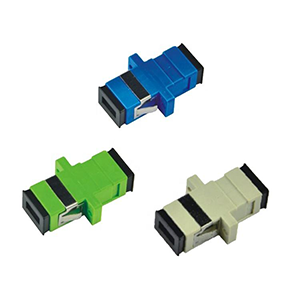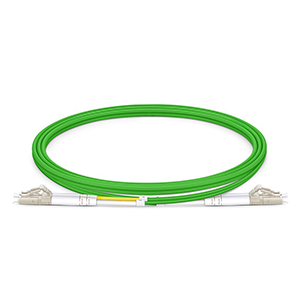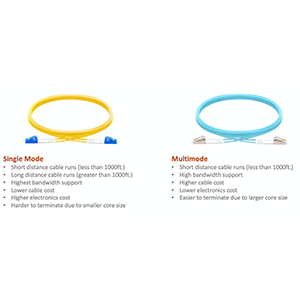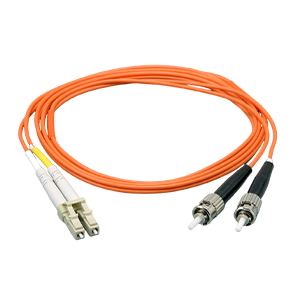Splitters play a key role in signal transmission. This article will compare the similarities and differences between splitters and anti-splitters. We will first explain the working principle and typical application scenarios of splitters, such as video, audio and data signal distribution, and signal coverage of wireless networks. Next, we will introduce the basic characteristics of splitters, including input and output characteristics and main advantages, such as the ability to expand signal coverage and meet the needs of multiple devices receiving simultaneously.
Then, we will define the working mechanism of the anti-splitter and explain its main uses, such as concentrating the transmission of scattered signals and simplifying the management of signal transmission and reception. Finally, we will compare the differences between splitters and anti-splitters in terms of input and output characteristics and application scenarios.
Basic Concepts of Signal Splitting
Signal splitting refers to the process of distributing an input signal to multiple output channels to ensure that multiple devices or systems can receive the same signal at the same time. It is widely used in fields such as communications, broadcasting, and data transmission. Through splitting technology, signal resources can be efficiently managed and allocated, improving the overall performance and flexibility of the system.
How a splitter works:
A splitter is a device used to distribute a single signal to multiple output ports. Its working principle mainly includes the following two aspects:
(1) Distribute a single signal to multiple outputs:
- A splitter can distribute a single input signal (such as a video, audio, or data signal) to multiple different output ports.
(2) Effectively distribute and transmit signals:
- A splitter ensures that each output port can obtain sufficient signal strength and quality.
- This ensures the effective transmission and distribution of signals on different output lines.
Typical application scenarios of splitters:
Splitters are widely used in the following typical scenarios:
(1) Video, audio and data signal distribution:
- In home entertainment systems, monitoring systems and other scenarios, splitters are used to distribute video and audio signals to multiple display devices.
- In computer networks, splitters are used to distribute data signals to multiple user terminals.
(2) Signal coverage of wireless networks:
- In wireless network deployment, splitters can be used to distribute wireless signals to multiple antennas to expand coverage.
- This ensures that the wireless network provides stable connection services over a wider area.
In short, a splitter is a device used to distribute a single signal to multiple output ports, and plays an important role in application scenarios such as video, audio, data, and wireless networks.
Basic features of splitters
The basic features of splitters include distributing a single signal source to multiple output channels to ensure the effective use of signal resources. It can be divided into passive and active types. The former does not require power and has a simple structure; the latter is suitable for long-distance transmission by amplifying the signal. Splitters improve the flexibility and performance of the system.
Input and output characteristics of splitters:
The main input and output characteristics of splitters include:
(1) Single input, multiple outputs:
- The splitter has a signal input port that can distribute it to multiple output ports.
- This can meet the needs of multiple devices receiving a single signal source at the same time.
(2) Signal strength will decrease:
- Since the signal will lose some power during the distribution process, the signal strength of each output port will be slightly lower than that of the input port.
- When designing a splitter, it is necessary to consider how to maintain sufficient signal strength at the output end.
Main advantages of splitters:
Splitters have the following main advantages in network applications:
(1) Extend the coverage of signal transmission:
- Splitters can distribute a single signal to multiple output ports to cover a wider area or device.
- This can extend the coverage of signal transmission and meet the needs of more users or devices.
(2) Meeting the needs of multiple devices receiving signals at the same time:
- A splitter can distribute a single signal source to multiple target devices to meet their needs of receiving signals at the same time.
- This is very common in video, audio, network and other application scenarios, improving resource utilization efficiency.
In short, splitters have the characteristics of single input, multiple outputs, and the ability to expand signal coverage and meet the needs of multiple devices, playing an important role in various network applications.
Working mechanism of reverse splitter
A reverse splitter works by combining multiple input signals into one output signal. It uses signal synthesis technology to converge signals from different sources into a single channel for further processing or transmission. Reverse splitters are widely used in communication and broadcasting systems to optimize signal integration and management.
Basic principle of the anti-splitter:
Anti-splitter (Combiner) is a device opposite to the splitter. Its working principle is as follows:
(1) Combine multiple signals into a single output:
- Anti-splitter has multiple input terminals and can combine these input signals into a single output signal.
(2) Realize signal aggregation and integration:
- Anti-splitter aggregates and integrates multiple input signals into one output signal through circuit design.
- In this way, the originally scattered signals can be concentrated for transmission.
Main uses of the de-splitter:
The de-splitter has the following two main uses in network applications:
(1) Concentrate the transmission of scattered signals:
- In some applications, the signal sources may be scattered in different locations.
- The de-splitter can gather these scattered signals into one, which is convenient for subsequent centralized transmission.
(2) Simplify the management of signal transmission and reception:
- The de-splitter can merge multiple signals into a single output, simplifying the management of signal transmission and reception.
- This can reduce the complexity of the system and improve the efficiency of signal transmission.
In short, the de-splitter can merge multiple input signals into a single output to achieve signal aggregation and integration. It plays an important role in centralizing the transmission of scattered signals and simplifying the management of signal reception and transmission.
Differences between splitters and de-splitters
A splitter distributes one input signal to multiple output channels, while a de-splitter combines multiple input signals into one output signal. Splitters are used for signal distribution, while de-splitters are used for signal integration. They differ in function and application scenarios, and each meets different signal processing requirements.
Comparison of input and output characteristics:
(1) Splitter has single input and multiple outputs, while de-splitter has multiple inputs and single outputs:
- A splitter has a single signal input and distributes it to multiple output ports.
- A de-splitter has multiple signal inputs and combines them into a single output signal.
(2) Splitter reduces signal strength, while reverse splitter increases signal strength:
- Due to signal loss during the splitting process, the output signal strength of the splitter will be slightly reduced.
- When the reverse splitter combines multiple signals into a single output, it can increase the output signal strength.
Differences in application scenarios:
(1) Splitter is used for signal distribution, while reverse splitter is used for signal aggregation:
- Splitter is mainly used to distribute a single signal to multiple target devices or lines.
- Reverse splitter is used to aggregate multiple scattered signals into one signal.
(2) Splitter is used to extend coverage, and reverse splitter is used for centralized transmission:
- Splitter can be used to extend the transmission coverage of the signal to meet the needs of multiple devices receiving at the same time.
- Reverse splitter is used to centrally transmit scattered signals and simplify the management of signal transmission and reception.
In short, there are obvious differences between splitters and reverse splitters in input and output characteristics and application scenarios. Splitter is mainly used for signal distribution and extended coverage, while reverse splitter is used for signal aggregation and centralized transmission. The two devices play different but equally important roles in the network.
Summary
Splitter and reverse splitter technologies play a complementary role in signal transmission. Our company has long been committed to the research and development and application of splitter and reverse splitter technologies and has rich practical experience. We provide powerful splitter and anti-splitter products, which are widely used in various network scenarios such as broadcasting, telecommunications, and military industry.
Our products adopt industry-leading technical solutions and achieve excellent levels in signal quality, reliability, and management convenience. At the same time, our engineering team will provide you with professional demand analysis and solution design services to ensure that the deployed splitter and anti-splitter solutions can meet your actual needs to the greatest extent. Contact us now to learn more.
Splitter And Reverse Splitter FAQ
A splitter is a device that divides a single input signal into multiple output signals, allowing one signal source to be distributed to multiple devices.
A reverse splitter is a device that combines multiple input signals into a single output. It effectively operates in the opposite direction of a standard splitter.
While a standard splitter divides one signal into several, a reverse splitter combines several signals into one. The direction of signal flow is the primary difference.
In some cases, yes. Many splitters can function as reverse splitters, but the effectiveness depends on the signal type and the specific splitter design. Not all splitters are bidirectional.
You would use a reverse splitter when you need to combine multiple signals into one, such as merging signals from multiple antennas or sources into a single input on a device.
Yes, combining signals with a reverse splitter can lead to signal interference, degradation, or loss if not properly managed. Signal quality depends on the design and quality of the splitter.
Reverse splitters can be used in many signal systems, including audio, video, and data, but their effectiveness depends on the specific application and signal type.
Using a standard splitter in reverse may result in signal loss, interference, or uneven signal distribution, as the splitter is not specifically designed to combine signals.
The cost can vary depending on the quality and design. However, reverse splitters or splitters designed for bidirectional use may be slightly more expensive due to additional circuitry or design considerations.
Determine the direction of your signal flow needs: if you need to divide one signal into multiple outputs, use a splitter; if you need to combine multiple signals into one output, use a reverse splitter.





